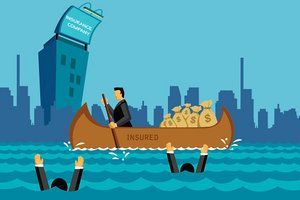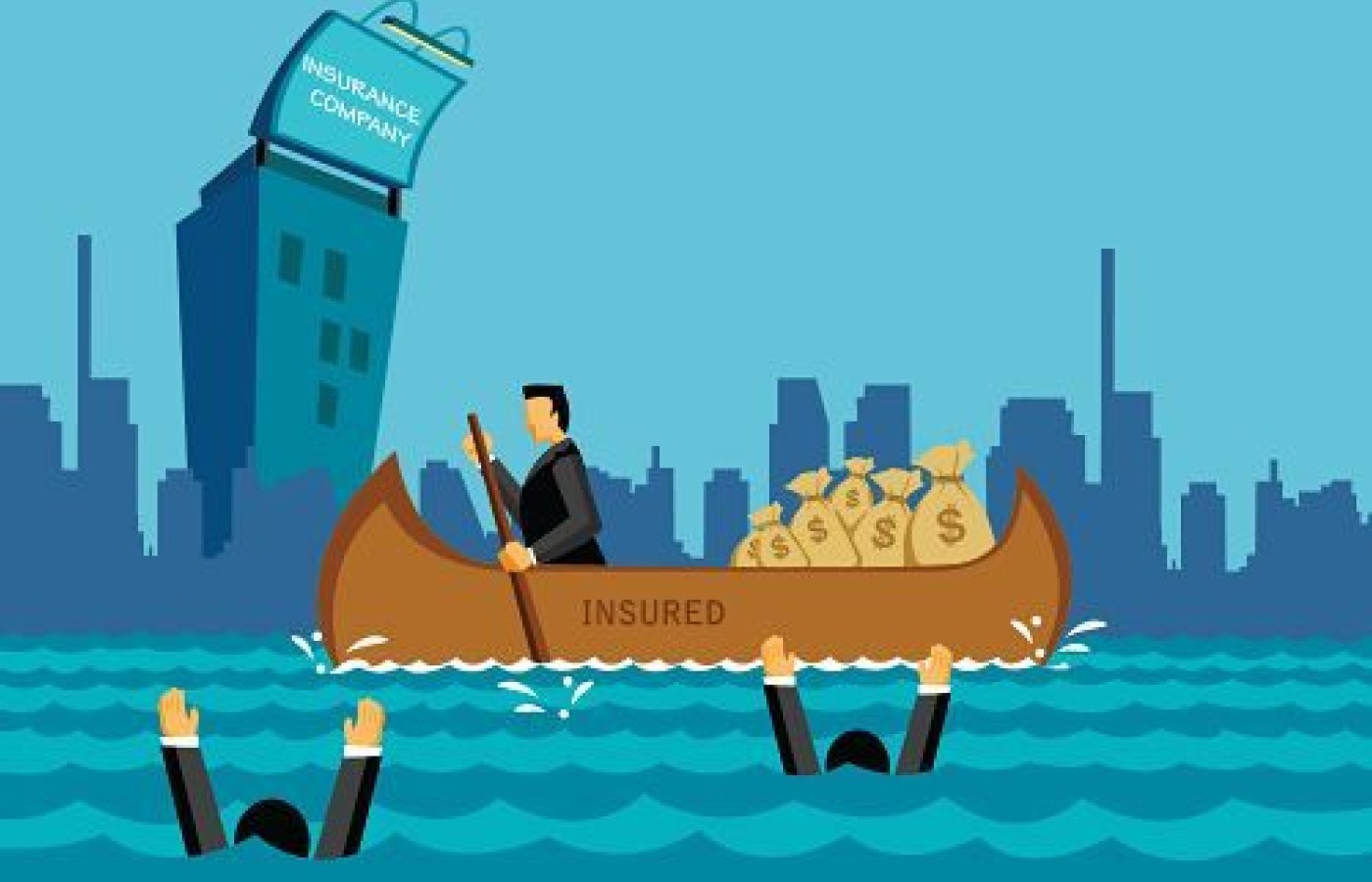Some doctors thrive in a personality-based clinic and have a loyal following no matter what services or equipment they offer, but for most chiropractic offices who are trying to grow and expand, new equipment purchases help us stay relevant and continue to service our client base in the best, most up-to-date manner possible. So, regarding equipment purchasing: should you lease, get a bank loan, or pay cash?
Personal Insurance: Necessary Evil or Waste of Money?
Insurance coverage may be construed as a necessary evil, especially when the least unexpected challenges occur. For example, most states require some form of mandatory insurance, i.e., automobile coverage with required minimum levels of coverage. No one plans on being in an automobile accident, but having the coverage helps negate some of the liability costs associated with the occurrence. Conversely, insurance may be purchased voluntarily, i.e., life, disability, umbrella/personal liability, etc. There are many different types of insurances available and for specific needs. The availability of all types of insurance (auto, home, life, disability, commercial, long term care, etc.), help mitigate the cost should a fortuitous event transpire.
Know Your Financial Needs
The purpose of insurance coverage is to help meet short, mid- and long-term goals. Costs are associated with purchasing insurance and it is important the correct insurance is obtained to ensure an adequate amount and purpose of indemnity coverage. Proper planning can minimize your potential negative financial exposure by leveraging your opportunity of protection by maximizing your available insurance coverage. Contracts and terms can vary greatly and it is important a purchaser is acutely aware of what anticipated needs are insured, the expected coverage and reimbursement, listed exclusions and restrictions. Additionally, within a type of insurance a subset of specific terms and conditions may exist. "While situations vary, recommendations include working with one agent or broker who writes for a dozen or more companies, especially if you have health issues."

The adage of two certainties being paying taxes and death may be true, but the opportunity to purchase certain insurances may not be as certain as someone ages. Life insurance purchased by someone in their 30's will be less expensive vs. someone purchasing a similar policy in their 50's. Costs are determined using different factors. The realistic truth of a 50 year old paying more is true not only because of the shorter life expectancy but the possibility of developing a chronic illness. Insurance may be offered but with an additional policy premium making it more expensive or worse being deemed uninsurable because of the perceived risk to the insurance company.
There are different types of life insurance available and costs vary depending on the selection. Age being one factor, the health of the proposed insured also determines if a policy is written preferred, standard or rated. The proposed insured may be offered a better premium the healthier they are. Most policies require a physical examination and blood analysis. Depending on the type and amount of insurance requested, the examination is usually performed by a nurse or trained individual, i.e., EMT or paramedic, physician assistant, etc. An examining doctor is generally only required if a large death benefit or customized policy is requested or the proposed insured's medical documentation is extensive. In addition to the above, premium costs are increased by policy riders (additions) which may be attached to the insurance policy contract. These include: waiver of premium, automatic premium loan provision, waiver of mortality deduction charges, accidental death benefit, guaranteed insurability, cost of living rider, payor benefit rider, spouse rider, children's rider, term rider, etc.
The application process may appear cumbersome, but is important to both the proposed insured (offered the best possible insurance and premium depending on their age and health) and insurance company (offering a policy based on the statements made in the application, submitted medical documentation and physical examination, anticipated premiums received and death benefits to be paid). A word of caution is to be truthful with the application responses. If later found statements made or documentation submitted were not truthful or fraudulent, the policy may be cancelled, benefits forfeited or reduced, in addition to facing possible prosecution for fraud.
You Have Options
The two main types of life insurance are term and permanent insurance. Term insurance is generally cheaper but becomes more expensive over time. It is usually renewable annually but as the insured ages the policy costs increase and without any cash value accumulation. As an aside, knowing term insurance costs rise over time, an insured may purchase a level term policy which locks in the annual rate over a specific amount of years.
Permanent insurance has annual premiums remaining level (although there may be exceptions) and some consider this a combination of term type insurance (specified death benefit) and cash value accumulation. The following are examples of permanent insurance: whole life, universal, variable, variable universal, etc. Whole life cash value grows with premium payments and the company paying a specified rate of return vs. the other permanent policies which build anticipated value based upon the return of a percentage of the invested premium. If invested returns exceed policy costs the insurance policy remains in force and builds cash value. However, if returns fall below that necessary to maintain the basic policy costs, an insured may be required to add to the policy or risk forfeiting the coverage.
Upon death, the death benefit value of the policy may be used for a specific purpose as directed by the insured for specified beneficiaries, i.e. guaranteed benefit to ensure family needs, pay college costs, retire outstanding mortgage or loans, estate tax liabilities, charitable and other bequests, etc. or given outright. In specific cases or needs, irrevocable life insurance trusts (ILIT) may be formed. The benefits of an ILIT are many, but in essence the value of the death benefit is not included in the insured's gross estate. The trustee makes distributions per trust provisions established by the grantor (insured). The downside of an ILIT is once established the insured no longer has access to any cash value or loan provisions of the policy. Charitable giving after death using a life insurance policy is also an option. However, it is recommended an estate planning attorney be consulted for specifics regarding an ILIT and charitable trusts.
Going Without Insurance
There are some who suggest not purchasing insurance and investing the cost of a policy may be a wise and profitable decision. In essence, an insurance company by accepting your payment offers you insurance and your beneficiaries a payout upon your death. Companies use actuarial and mathematical computations to determine the likelihood of your death (as a statistical pool with similar lives); invest the premiums paid and earn profits for the company and shareholders. "Life insurance can help provide financial security for your family. However, if you buy it for any reason other than the death benefit, make sure that the policy fills the alternative role in the best possible fashion before writing your first premium check". The question really becomes are you financially sound or believe your investments will provide adequate returns no matter market gyrations. Upon your death will your beneficiaries (i.e., family) have the where with all to maintain their lifestyle including any anticipated or unexpected increased costs going forward? Additionally, if your plans go awry can you be certain you will be insurable should you need life insurance?
Unfortunately, once an event occurs there is no option of purchasing coverage after the fact. If necessary insurance was purchased and maintained, in all likelihood the insured will be reimbursed for the costs incurred, subject to a policy deductable and co-pay percentage (if applicable). Lack of planning may cause an individual to incur an unexpected and potentially large expense by not having appropriate insurance to help cover these costs.
Necessary Action Steps
Becoming proactive involves time and effort, but the alternative of not may prove to be exceedingly costly and troublesome to you and your family. When planning for unexpected occurrences think about minimizing and mitigating your risks. For example, "Life insurance never gets cheaper; it's not like buying last year's iPhone. Life insurance will continually get more expensive as one ages. That's why it's important to insure now rather than later". Consulting with a knowledgeable professional can help guide you through the maze of options by purchasing the best coverage and best value for the required protection.



